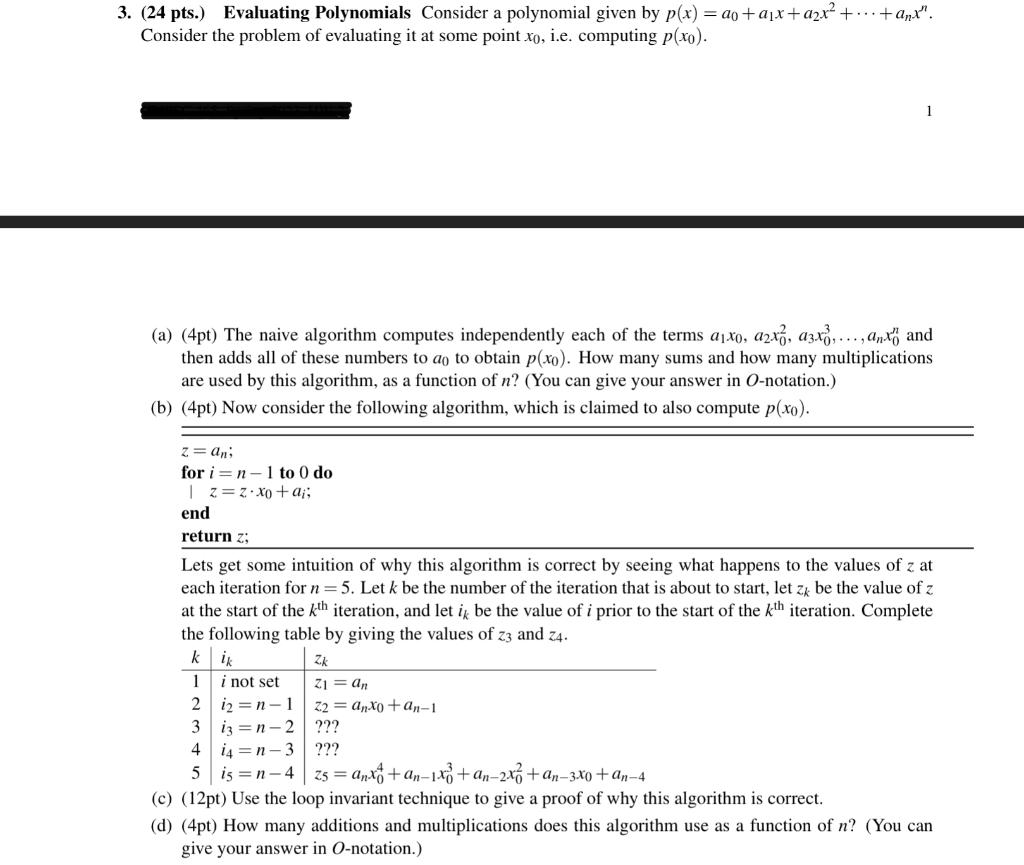Answered step by step
Verified Expert Solution
Question
1 Approved Answer
3. (24 pts.) Evaluating Polynomials Consider a polynomial given by p(x)=a0+a1x+a2x2++anxn. Consider the problem of evaluating it at some point x0, i.e. computing p(x0). (a)

Step by Step Solution
There are 3 Steps involved in it
Step: 1

Get Instant Access to Expert-Tailored Solutions
See step-by-step solutions with expert insights and AI powered tools for academic success
Step: 2

Step: 3

Ace Your Homework with AI
Get the answers you need in no time with our AI-driven, step-by-step assistance
Get Started


